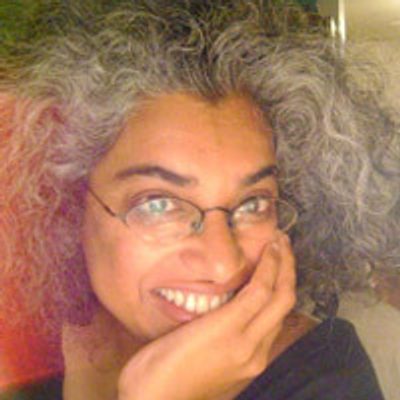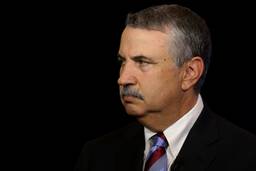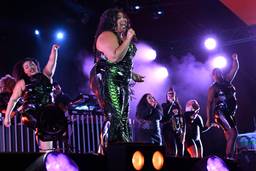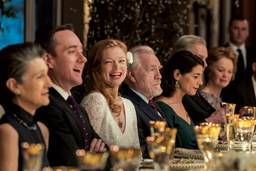No More City on a Hill
San Francisco isn’t some carefree utopia for queer people, says trans activist Mattilda Bernstein Sycamore.
Yasmin Nair
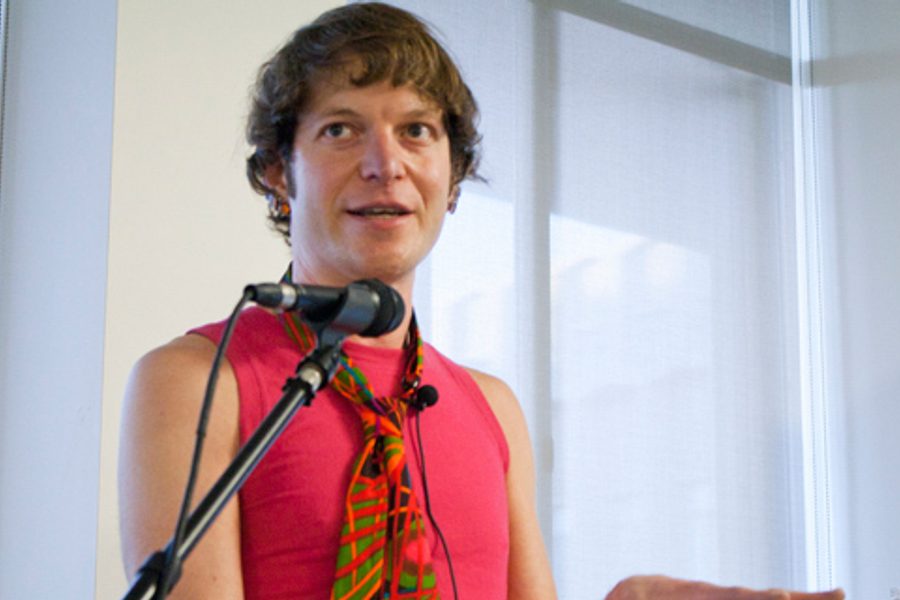
As a leading trans, queer writer and activist whose work has been hugely influential in the realm of radical politics, Mattilda Bernstein Sycamore has frequently contested what she sees as the mainstream gay agenda of assimilating into intrinsically homophobic and capitalist power structures. Her works have earned praise from sources as diverse as Michelle Tea, Edmund White, the San Francisco Chronicle and The Times of London. They include anthologies like That’s Revolting!: Queer Strategies for Resisting Assimilation and Why Are Faggots So Afraid of Faggots?: Flaming Challenges to Masculinity, Objectification, and the Desire to Conform. In 2007, her novel So Many Ways to Sleep Badly evoked the beginning of the end of the dream that has been San Francisco for generations of queers. Her most recent work, The End of San Francisco, is a memoir about the city where she lived off and on from 1992 to 2010.
The End of San Francisco moves between her life as a survivor of incest and her attempts to create and sustain a queer, radical home in the city. Even as Sycamore describes San Francisco’s potential for a queer politics and ethics in the book, however, she unstintingly records what she describes as crushing disappointments from people and groups she trusted.
I met with Sycamore, a longtime friend and comrade, when she was in Chicago recently as part of her book tour. We talked about San Francisco and its slide into a fiercely contested site of neoliberal gentrification, dotted with million-dollar mansions brought about by the money from corporations like Google and Twitter. We also spoke about her ideal vision for the radical queer movement in the future.
Your new book, The End of San Francisco, is about a city that has long been a destination for generations of queers — a kind of nesting place for all kinds of gay and queer politics. Do you think that the potential for radical queer and trans politics has ended?
I’m not interested in promoting the idea of a Golden Age, because I think no matter when or where we’re living, if we’re living in the dominant colonial power in the world, we’re living in a horrible time. And we still need to be creating transformative ways of challenging the status quo.
[That said], for decades San Francisco has sheltered radical visions of queer politics, sexuality, community-building and ethics that have perhaps not existed in as concentrated ways in other places.
In the book, I’m trying to investigate the ways in which this idea of a queer autonomous space or a home for the fringe or a place where marginalized queers can come together to cope — I’m investigating the hold that idea has had on me. And so of course it was always everything, and it was always everything that let me down.
So I’m not actually trying to say that radical queer politics have disappeared or even dissipated. What I’m trying to question and investigate is the place where these bold visions of new ways of taking care of one another, of lust and love on our own terms, of accountability and mutuality and a gender, sexual, social, political self-determination [could have come about]. I want to investigate this rhetoric that is so intoxicating and the possibilities that are so palpable, but also the ways in which they shelter a kind of violence. [That kind of violence] hurt me more over the last twenty years than the violence of straight normative culture or even the violence of gay mainstream culture.
Because it’s when you really believe in people, that’s when they can really let you down.
What do you mean by the ethics of this queer politics?
When I moved to San Francisco, I was fleeing childhood and everything I was supposed to be. I grew up in an upper middle-class assimilated Jewish family, liberal-identified, in Washington D.C. I thought that in order to escape, I had to go to a more prestigious college [than the ones my parents went to], to make more money than them, to have a bigger house, to out-do them in every way.
I did start on that path in the sense that I did go to a more prestigious college. And when I got to Brown, I realized that I was just learning to become them, and I wanted to unlearn the violence I had grown up with. So I went to San Francisco in search of others like and unlike me, to learn from and create our own worlds, to try and challenge the worlds around us. The people I was inspired by were queers living on the margins. Many of us were escaping abusive families of origin; many of us were college dropouts or runaways.
We were dedicated to recovering the things that had been thrown at us, so we took on language used [by others] to stigmatize us, like “faggot,” “dyke,” “whore,” [as our own]. We were proud of that kind of flamboyant defiance. We didn’t want any part of dominant cultural norms — whether that was the norm of the nuclear family, the norm of the suburbs, the norm of educational attainment, or the norm of the 40-hour workweek. We wanted to shatter those and create other ways of taking care of one another that were actually based on shared values.
We were creating our values, so we were constantly changing in certain ways. And we definitely had a lot of judgments of those who didn’t live up to the rhetoric. But that was the idea: We were creating our own ethics.
In terms of a queer autonomous space, to the average person, it would seem that San Francisco still functions as a kind of beacon on the hill. But as you point out, it’s a still highly contested place.
I think especially since the 1970s, San Francisco has been seen as the destination, by gay men in particular: a place where queer people can more openly express their desires and create lives on their own terms and create relationships that matter to them and to the people around them. There are many neighborhoods in San Francisco that have, for years, sheltered many different kinds of queer cultures. The Castro is the one that shines in the queer imagination as one of the most famous gay neighborhoods.
Over the years, what I’ve seen in San Francisco is that the Castro itself has become the place where anyone who doesn’t strive to conform to white middle-class norms is not welcome.
What’s sad to me is the way that gay people who moved to San Francisco in the ’70s, who were escaping from places where they couldn’t express themselves or families that really wanted them to disappear, then moved to San Francisco and ended up policing the borders to keep out the “wrong” queer people. For example, in the Castro, we have gay bar owners arresting homeless queers because they are getting in the way of happy hour. We have gay real estate development companies who advise their clients on how to evict people with AIDS and long-term seniors so they can get more money for their property. We have gay neighborhood associations that fight against the construction of a queer youth shelter; we have gay political consultants who engineer the elections of anti-poor, pro-development candidates over and over again. So we can see in San Francisco what happens when gay people actually become part of the power structure.
Straight people are not going to hold mainstream gay people accountable for their violence, because straight people are too busy trying to camouflage their own homophobia. The straight left has done no better job than the Tea Party at dealing with structural homophobia. So queer people have to hold gay gentrifiers accountable for that kind of violence. Alongside that smiling, happy, “We’re just like you” vision of gay normalcy, there has been for decades a radical queer outsider culture that’s dedicated to creating an alternative to that as well as an alternative to the straight worlds that most of us originated in.
But what does a queer autonomous space, the alternative you spoke about, look like?
I’m not sure I can say what it looks like because I’ve never seen it in actual fruition. So I can talk about some of the values that mean something to me, and one of them is the idea of mutuality so that we’re all taking care of one another.
And within that, it’s also about holding one another accountable, so when we fail, when we fuck up, when we hurt one another, let’s create some way to deal with it.
It’s also about creating other ways of living with and lusting for and taking care of one another that aren’t predicated on the norms that we’re supposed to think about. Whether that means creating ten people as your chosen family or one person, or whether than means multiple partners, or whether that means a different kind of commitment. What is commitment based on? Is it based on the state accepting our carnal coupling or is it based on something deeper?
For me, I don’t know if there’s this actual [physical] space, but it’s creating a place where we can ask these questions over and over again.
You talked about the nuclear family unit not necessarily being part of this queer radical space. But supporters of gay marriage, about which you’ve written critically, would argue that same-sex marriages are different than straight nuclear family units. Couldn’t it be argued that these do shift or even end the oppression of marriage because they’re structured differently, with different or no gender expectations?
It’s sad to me to see the ways in which gay people are propping up a failed system. If you ask most straight people in the United States whether marriage is working, people will say, “Hell, no.” Anyone who has a brain that’s working knows that marriage still exists as a site of anti-woman, anti-child, and anti-queer violence, historically and in the present. And I think for many decades, gay people, including mainstream gay people, have created love and lust that are not predicated on state acceptance.
I remember when the whole gay marriage thing exploded in San Francisco and Phyllis Lyon and Del Martin, who had been together for more than four decades, were the first people to get officially married. They said, “Finally, it’s legitimate.” And that was one of the most horrifying things I’ve ever heard. This was a couple that had been together for over 40 years, and now their relationship was legitimate because of a piece of paper from the state?
The fact that gay people can get married doesn’t change marriage. It just makes that failed system stronger. And I think marriage in the gay agenda claims that marriage will solve the problems of equality, so marriage will get you health care, or food on the table, or someone who loves you, or the right to stay in this country or leave if you want to, food, a sex life that matters — all of these things that should be universally accessible — and actually that’s not true. Marriage might get you that if your partner has some terrible health care plan that you can sign onto, or if they have the right kind of resources and so on, but that whole fight for gay marriage has come at the cost of fighting for things like universal access to basic needs.
I remember going to the March on Washington for lesbian, gay, and bisexual rights, with ACT UP, to do civil disobedience for health care. We thought, somewhat naïvely looking back on it, that since that was to be the largest march, maybe we’d get a couple of thousand people to do this civil disobedience. Instead, we had 41 people, and alongside us were a million people marching for the right to be openly gay and serve in the military.
That was a big moment — instead of fighting for universal health care, the gay movement decided to fight for the right to kill and go abroad and get away with it, just like straight people. And marriage came after that as a central issue for gay people. It’s all part of a larger idea that the dominant measures of straight conformity are now the measures of gay success. If you can be gay and become part of the power structure, then you’ve succeeded.
But that brings me then to the elephant in the room of queer radical politics, which is the presence of capitalism, which is also what’s causing the rapid gentrification in San Francisco. It seems to me that in queer radical circles, barring a few exceptions, there’s not much conversation yet about the effects of neoliberalism, for instance. How do we start that conversation?
The ways that gay people have so willingly become pawns of this hyper-patriarchal, patriotic, imperialist vision of U.S. world dominance? For me, it’s the personal side of that — that’s where gay people are more than happy to ethnically cleanse their neighborhoods in the service of neighborhood beautification and property values. Because people will say that “Well, gentrification is inevitable,” and I can respond, “Well, it’s not inevitable, it’s inevitable because of the structures within the government.”
Gentrifiers’ rhetoric is always about choice, but what’s they’re doing is creating fewer options. If you have to conform to a long-term, tacky, outdated institution based on long-term coupledom sanctioned by the state in order to get a health plan, that is not a choice. We all need health care food and a place to live, and for someone to say well, “You can choose to or not choose to” is not valid.
It’s tricky because in radical queer circles we also talk about creating more choices, but we’re talking about creating more choices for self-determination, not creating more choices to fuck over other people and get away with it.
People will ask, “What’s next for the gay movement?” and I respond, “The next thing for the movement is to defund itself and create something else.” These big gay non-profits have been funneling resources in the wrong direction and systematically obliterating the options for everyone within the rhetoric of choice.
In recent years, there have been, at least on the surface, significant changes that appear to make it easier to be out and LGBTQ. But there are contradictions in that. For instance, younger queers might be in schools with Gay-Straight Alliances, but their options for finding queer radical politics are even fewer because of the push for a more normative gay agenda, as with marriage, and their only choices sometimes are to find jobs in non-profits that are just as normative. There’s also an urban-rural divide, where it’s assumed that radical queer politics can only be found in cities. How do we go about ensuring that people can find queer radical spaces in this climate?
When I was entering the world as a radical queer person, it was just the beginning of mainstream representations of what it meant to be gay or queer. Now there are a lot of those, and it’s getting grosser and grosser.
I’m just so glad I didn’t have something like [NBC show] The New Normal, where an affluent gay couple is hiring a surrogate to have their child, to tell me what it’s like to be gay. And then we have something like the It Gets Better campaign, which tells queer kids growing up in abusive homes, where their teachers tell them they’re worthless, where people beat and abuse them, “Well, you know, just hang on for a couple of years and eventually you’re going to be able to get a job at Google or Pixar or the San Francisco Police Department.” That sort of positivist rhetoric does more violence than anything I can think of to queer kids.
So I think the first thing is to talk about where we’ve failed one another, where we’ve failed structurally, the places where we’ve created are not helping people. So it gets better, then what? No one will talk to you because you’re fat or not the right race, no one will talk to you because you’re the wrong gender presentation, and maybe you’re 30 or 40 or 60 and that’s too old [for things to get better].
The question of urban versus rural is less important to me than the question of how we create spaces anywhere. Sometimes, in the conversation about urban areas, people have this idea that the urban is more sexual and radical and more flamboyant, and the rural is more conservative; the idea is that we have to be more repressed in order to be more acceptable to people in rural areas.
For me, it’s the opposite: Wherever we are, we have to be creating more possibilities for people to be flamboyant, to be defiant, for people to create their own worlds. So I don’t have the answer so much as to say we need to be creating those worlds. The assimilationist vision of gay normalcy is always about regimenting and policing the border — to say there’s only one way to be gay. That hurts everyone, whether you’re living in a small town or living in your commune in Los Angeles. It’s about puncturing that mythology and creating more possibilities.
Yasmin Nair is a writer, academic, and activist. She’s an editor at large at Current Affairs, on the editorial board of the Anarchist Review of Books, co-founder of the radical queer editorial collective Against Equality and the (Volunteer) Policy Director of Gender JUST. She’s currently working on her book Strange Love: A History of Social Justice And Why It Needs To Die. Her writing can be found at www.yasminnair.com.
